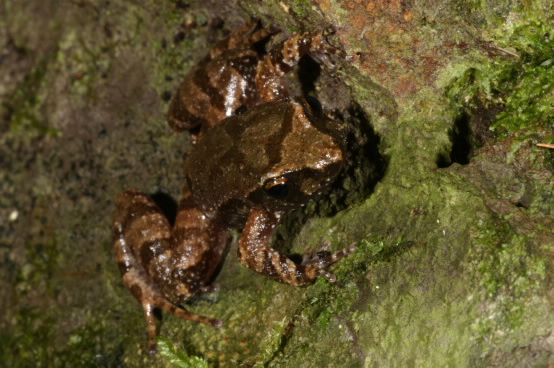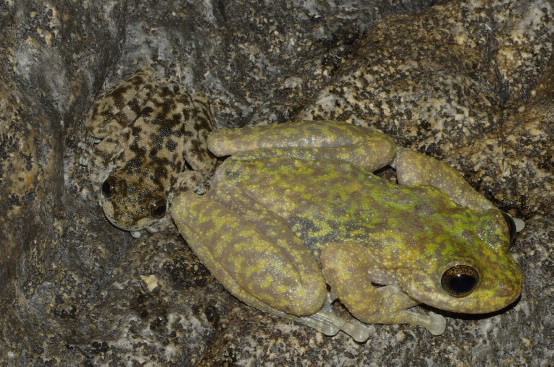Media Releases
Funding fight for frogs’ survival
Funding fight for frogs’ survival

The Kroombit Tinker Frog, Kroombit Tops National Park (Taudactylus pleione)
Scientists fear seven critically threatened frog species will become extinct within the next decade unless vital research funding is secured.
The deadly Chytrid Fungus has wiped out six frog species since it reached Australia in 1978, with another seven in imminent danger.
James Cook University senior research fellow Dr Lee Skerratt has been closely following the plight of the seven threatened species as numbers continue to rapidly decline.
Dr Skerratt said the future of the critically endangered species could be secured with a relatively modest increase in funding towards research and disease management.
“With a research and management program costing about $15 million over five years, we believe we can save these frogs from extinction,” he said.
“With a one trillion dollar annual economy, Australians should be able to afford spending this relatively small amount of cash to save our frogs.”
Two of the seven species at risk live in Queensland – the Kroombit Tinker Frog from Kroombit Tops National Park and the Armoured Mist Frog from the Wet Tropics World Heritage Area in North Queensland.
The five other species at risk are: the Southern Corroboree Frog of Mt Kosciuszko National Park; the Northern Corroboree Frog of Mt Kosciuszko National Park and adjacent National and State Parks; the Baw Baw Frog of Mt Baw Baw National Park; the Spotted Tree Frog from the Victorian alps; and the Tasmanian Tree Frog from the Tasmanian World Heritage Area.
Dr Skerratt said scientists had identified new research required such as enhancing natural selection against the fungus, as offering the best chance for the seven critically endangered frogs to survive.
“Like a lot of these sorts of situations, the real problem is trying to obtain long-term funding,” he said.
“It has been 16 years since disease was recognised as the cause of frog declines, but these types of problems are not easily solved.
“You also have to remember that financial resources for wildlife disease are on a much smaller scale.”
Nick Clemann from the Arthur Rylah Institute for Environmental Research in Victoria said time was running out.
“There are no second chances when you’re talking about extinction,” he said.
“These seven frog species are part of Australia’s unique wildlife heritage and saving them would be both an extraordinary achievement, and a priceless gift to future generations.”

The Armoured Mist Frog from the Wet Tropics World Heritage Area in North Queensland (Litorica lorica) (left) and the Waterfall frog from the Wet Tropics World Heritage Area in North Queensland (Litoria nannotis) (right)
Frog scientists available for media interviews:
Dr Lee Skerratt from James Cook University on 0427 155 537
Dr David Hunter from the NSW Office of Environment and Heritage on 0439 131 593
Nick Clemann from the Victorian Arthur Rylah Institute for Environmental Research on 03 9450 8600
Dr Annie Philips from the Tasmanian Department of Primary Industries, Parks, Water and Environment on 0400 954 295.
JCU Media contact: Caroline Kaurila (07) 4781 4586 or 0437 028 175
First published 20 February, 2014